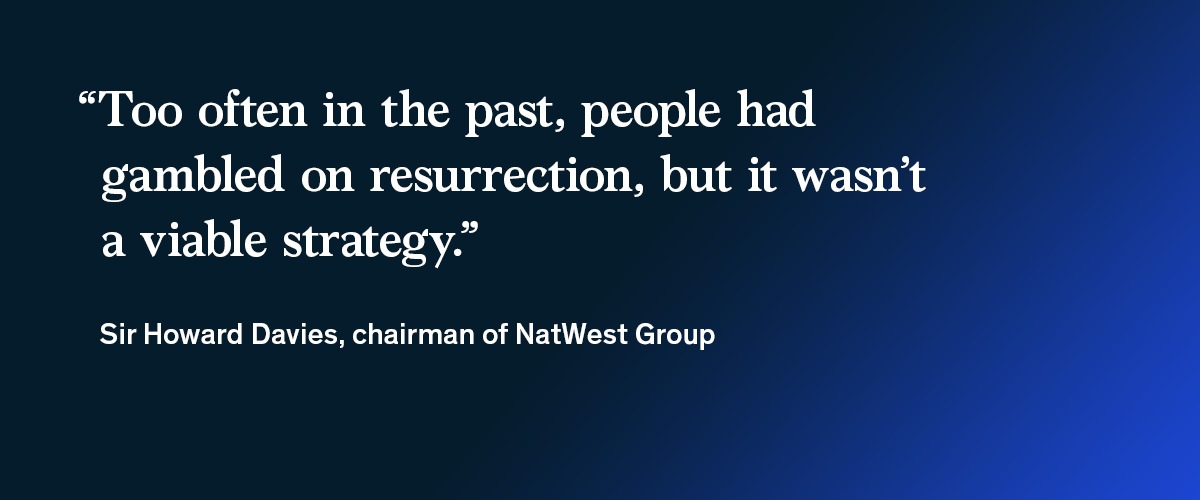| Our best ideas, quick and curated | may 20, 2022
|
| This week, we look at what makes a successful business design department (and no, it’s not a pricey coffee machine in a fancy loft office). Plus, worker power is on the rise—or is it? And read about our new Global Energy Perspective 2022. |
|
|
|
| Embedding design. Building a modern, successful design department is one of four actions a CEO can take to drive revenue growth at twice the rate of industry peers, McKinsey research shows. But what makes for a successful design department and how do companies avoid siloing it off from the rest of the business? To answer these questions, we looked at data from three million—yes, million—designers and design leaders in more than 100,000 design departments, combined with their organizations’ financial performance. We also surveyed more than 250 business and design leaders and held interviews with 30 senior executives in leading design-driven companies. |
| Part of the team. In our new report, Redesigning the design department, we found that organizational integration was the hallmark of successful design departments. Instead of trying to “protect” designers within the design studio, leading chief design officers work with the C-suite to embed designers into cross-functional teams and give them the training and the tools needed to collaborate and lead successfully. This practice was true across almost all industries that we reviewed: both B2C and B2B. We also found three core integration themes: |
| Cross-functional organizational structure. The best design teams had designers organized with dotted lines to their design departments (for knowledge sharing, tools, and community) but hard lines to their project team. All project team members—including designers, marketeers, financiers, and project managers—had a common set of financial incentives linked to time, cost, revenue, and customer satisfaction. And this included putting designers into cross-functional teams to improve the company itself, not just the products and services. |
| Nurturing design talent. Leading design departments developed their designers through training, secondments, and mentorship in business and technology to better integrate them into the company. They also recognized that designers put purpose at the top of their list of reasons to seek new employment. The best design departments recognize this and empower their designers with projects where they can make tangible improvements to products, to the organization itself, and to wider society. |
| Tools and infrastructure. For both physical and digital design, it was important to have collaboration tools that enabled designers to deliver their best work. Particularly, the digital domain we analyzed saw the introduction of more than 30 well-regarded new tools in the past four years. However, the research did not suggest that there was “one tool to rule them all,” but rather that “tool vitality” mattered. In addition, the rate at which design departments pilot, scale, and retire tools was a positive indicator of department health. And we believe this will be even more important as new generative, AI-based tools become more prevalent. |
| Big picture. Organizations that get these three themes right see benefits not only in financial performance but also through having happier employees, greater innovation, and stronger environmental, social, and governance impact. |
|
|

|
| OFF THE CHARTS |
| Want not, waste not? |
| In 2020, Californians bought and wore 510,000 to 530,000 tons of clothing. Some 500,000 of those tons will eventually enter landfills—covering an area about 3.5 times the size of Los Angeles. More than 97 percent of the textiles used in this clothing are virgin materials, and less than 1 percent of the materials worn today will resurface in clothing manufactured tomorrow. The key to changing those numbers lies in circularity—specifically, in building a closed loop for recycling materials back into the manufacturing process, reducing both waste and reliance on natural resources.
|
|
|
|
|

|
|
|
| PODCAST |
| Is worker power on the rise? |
| The answer is: it depends. Knowledge workers with skills that are easily portable across employers and geographic locations have power. Folks who are in jobs that require them to be on-site or in person, such as service-related jobs, are still grappling with local labor markets with very different dynamics. That said, as the Great Attrition persists, employer–employee dynamics appear to be changing. In this installment of the McKinsey Talks Talent podcast, two McKinsey talent experts discuss who actually benefits in today’s labor market—and how durably. |
|
|

|
| MORE ON MCKINSEY.COM |
| Global Energy Perspective 2022 | The transition to a lower-carbon energy system continues and accelerates. Our new report provides insights into the longer-term trends that will continue to be essential in shaping future energy systems. |
| Latin American physicians on the future of healthcare | In a survey, Latin American physicians said that COVID-19 caused them to see the benefits of shifting from fee-for-service to value-based care models that benefit all stakeholders in the system. |
| Philippines economic outlook | Three shifts introduced during the COVID-19 crisis will persist: economic activity will be digitally enabled but also hyperlocal; the wealth gap is widening; and the pandemic is likely to result in a greener and more sustainable economy. |
|

|
| PARTING QUOTE |
 |
|
| — Edited by Barbara Tierney |
|
|
|
| BACKTALK |
| Have feedback or other ideas? We’d love to hear from you. |
|
 |
|
|
Did you enjoy this newsletter? Forward it to colleagues and friends so they can subscribe too.
Was this issue forwarded to you? Sign up for it and sample our 40+ other free email subscriptions here.
|
|
|
|
|
Copyright © 2022 | McKinsey & Company, 3 World Trade Center, 175 Greenwich Street, New York, NY 10007
|
|
|
|